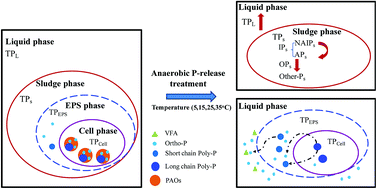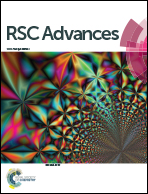Temperature effect on extracellular polymeric substances (EPS) and phosphorus accumulating organisms (PAOs) for phosphorus release of anaerobic sludge†
Abstract
Phosphorus (P) is an essential element for living organisms and anaerobic sludge is an attractive source for P recovery. Anaerobic P release depends on both phosphorus-accumulating organisms (PAOs) and extracellular polymeric substances (EPS). However, the P release contributed by the microbial cells and EPS was not addressed completely and the effect of temperature on the mechanism of P release and transformation was rarely considered. This study, therefore, investigated the effects of temperature on the P fraction and the relationship between PAOs metabolic pathway and EPS reaction using the Standards in Measurements and Testing (SMT) protocol and the 31P nuclear magnetic resonance (31P-NMR) experiments. Experimental results showed that the temperature not only affected the metabolism of PAOs, but also significantly influenced the EPS components and the hydrolysis of EPS-associated polyphosphate (poly-P). And the P release mainly occurred due to biological mechanisms with a conversion from non-reactive P (NRP) in both intracellular and extracellular substances to reactive P (RP) fractions. The highest concentration of total P in the supernatant (TPL) occurred at 15 °C, and the TPL release from the solid to liquid phase was better fitted with pseudo-second-order kinetic model. More organic P in the sludge (OPs) released from the sludge phase at 35 °C would convert into inorganic P (IPs) and non-apatite inorganic phosphorus (NAIPs) was the most labile P fraction for P release. The hydrolysis of EPS-associated poly-P was enhanced by higher temperatures with the degradation of the long-chain poly-P by PAOs. Meanwhile, a lower temperature could obviously improve the P release because the dominance of PAOs would potentially shift to GAOs with the increase of temperature. But the very-low temperature (5 °C) was not beneficial for the P release and suppressed the microbial activities.



 Please wait while we load your content...
Please wait while we load your content...